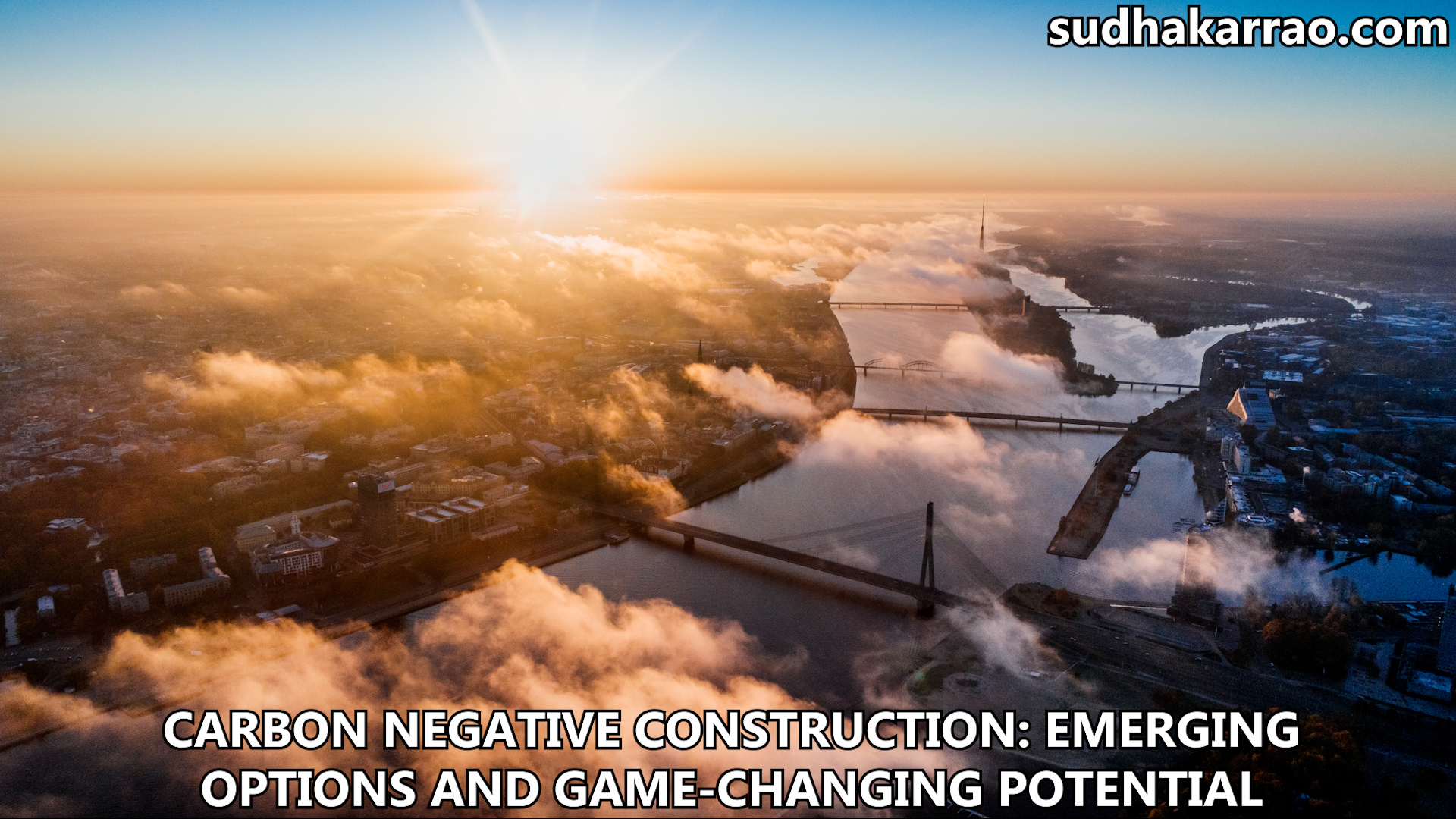Carbon negative construction: Emerging options and game-changing potential
Last year, Microsoft announced that it will become carbon negative by 2030, and remove its historic carbon footprint by 2050. The company gave a detailed breakdown(1) on how it aims to do so, along with the earmarked budget and other related information. This marked the first time that a major corporation pledged to go carbon negative, which is a step beyond the typical “carbon neutral” efforts. So, why is this shift important?
By definition, carbon neutrality is aimed at neutralizing or offsetting the carbon that we release into the atmosphere. But it does not factor in the two trillion metric tons of carbon that we have already pumped into the atmosphere. This is where the carbon negative approach, aimed at removing more carbon than we are releasing, becomes more appealing. And this approach has massive implications for the construction sector.
Decarbonization of construction
Buildings and the construction sector together account for over one-third of global energy consumption and nearly 40% of total greenhouse gas emissions(2). Lighting and HVAC consume the most energy, and are now becoming more energy efficient, shifting the focus to building materials used in construction. Even existing green building certification programs like LEED offer little solution to this effect, since their focus is on reducing emissions, rather than capturing existing carbon. The solution therefore lies in materials that can store carbon and making cement carbon negative.
Carbon-negative cement
It is estimated that approximately five billion metric tons of concrete are being produced globally every year. The accompanying processes are carbon intensive. But research(3) suggests that depending on the extent to which thermal fuel supply is decarbonized, a carbon capture and storage (CCS) rate between 53-80% will make cement carbon-neutral, and higher CCS capture rates can make cement net carbon-negative. There are many technologies that have shown considerable promise in the carbon sequestration, as it relates to the production of cement.
Alternatives to cement
Regardless of how successful the redevelopment of concrete gets, its carbon-negative properties cannot be as definitive as that of alternative building materials like, say, wood. Wooden building materials require less energy in production. And thereon, wood serves as lifelong carbon storage, removing more carbon than what was emitted during construction.
In an extensive study by Finnish researchers(4), it was ruled that the potential carbon storage of wooden buildings is not mainly related to the building type, wood type, or the building size, but is based on the number and the volume of wooden components in the buildings. So, low-embodied-carbon wooden materials, fibre carpet tiles, bio-based materials from engineered bamboo, and cross-laminated timber (CLT), used in different capacities and for different purposes, can lead to massive, cumulative impact. According to the researchers, if 80% of residential buildings were made of wood and they stored 300 kilograms of carbon dioxide per square meter, the cumulative carbon storage over two decades would be a whopping 1.067 gigatons.
Such possibilities are now becoming closer to reality with increasing adoption of CLT. According to a report published by the World Economic Forum(5), timber is the only building material that we can grow that actually reduces carbon dioxide. Every ton of timber removes 1.8-ton equivalent of carbon dioxide from the atmosphere. Besides, this type of timber is designed for high fire resistance. In case of fire, CLT burns its surface char layer and protects the interior frame, giving time for the evacuation of occupants.
Another promising development is the use of hempcrete, a mixture of hemp shives, lime, sand, etc., used for both construction and insulation. Besides having many other advantages compared to cement; hemp absorbs CO2 from the atmosphere and stores it after fabrication. Both hempcrete and CLT are finding application in leading construction markets, notably in the UAE. Many pavilions in the upcoming Expo event feature structures built using these products.
The widespread of use of these alternative materials, and the emergence of new sequestration technologies, are enabling a future in construction will not only be carbon negative through its lifecycle, but will also be a major contributor to undoing all carbon emissions, since the inception of the industrial age.
- https://blogs.microsoft.com/blog/2020/01/16/microsoft-will-be-carbon-negative-by-2030/
- https://www.iea.org/topics/buildings
- https://energyinnovation.org/wp-content/uploads/2018/11/The-Role-of-Cement-in-a-Carbon-Neutral-Future.pdf
- https://www.anthropocenemagazine.org/2020/11/the-rise-of-the-carbon-negative-building/
- https://www.weforum.org/agenda/2019/07/sowing-seeds-for-timber-skyscrapers-can-rewind-the-carbon-footprint-of-the-concrete-industry/




